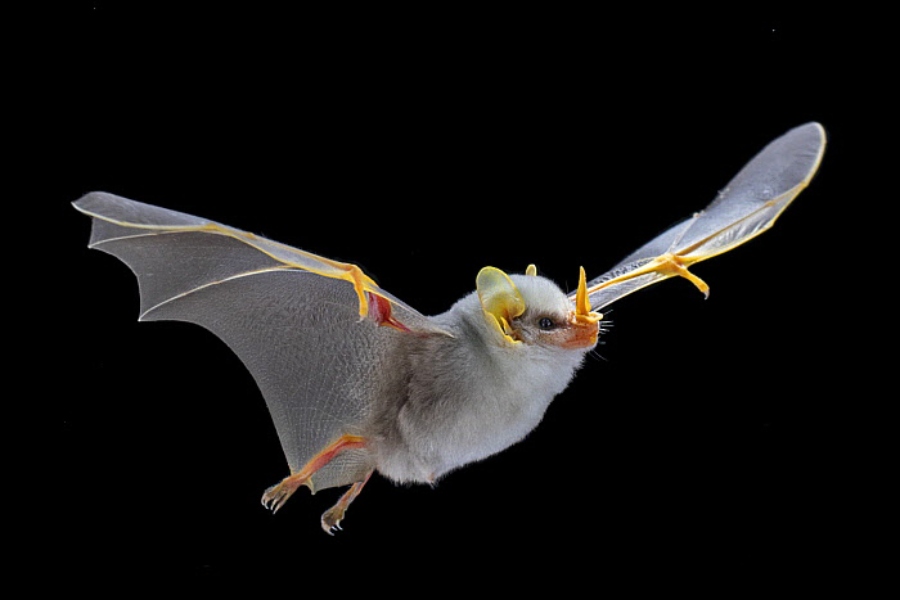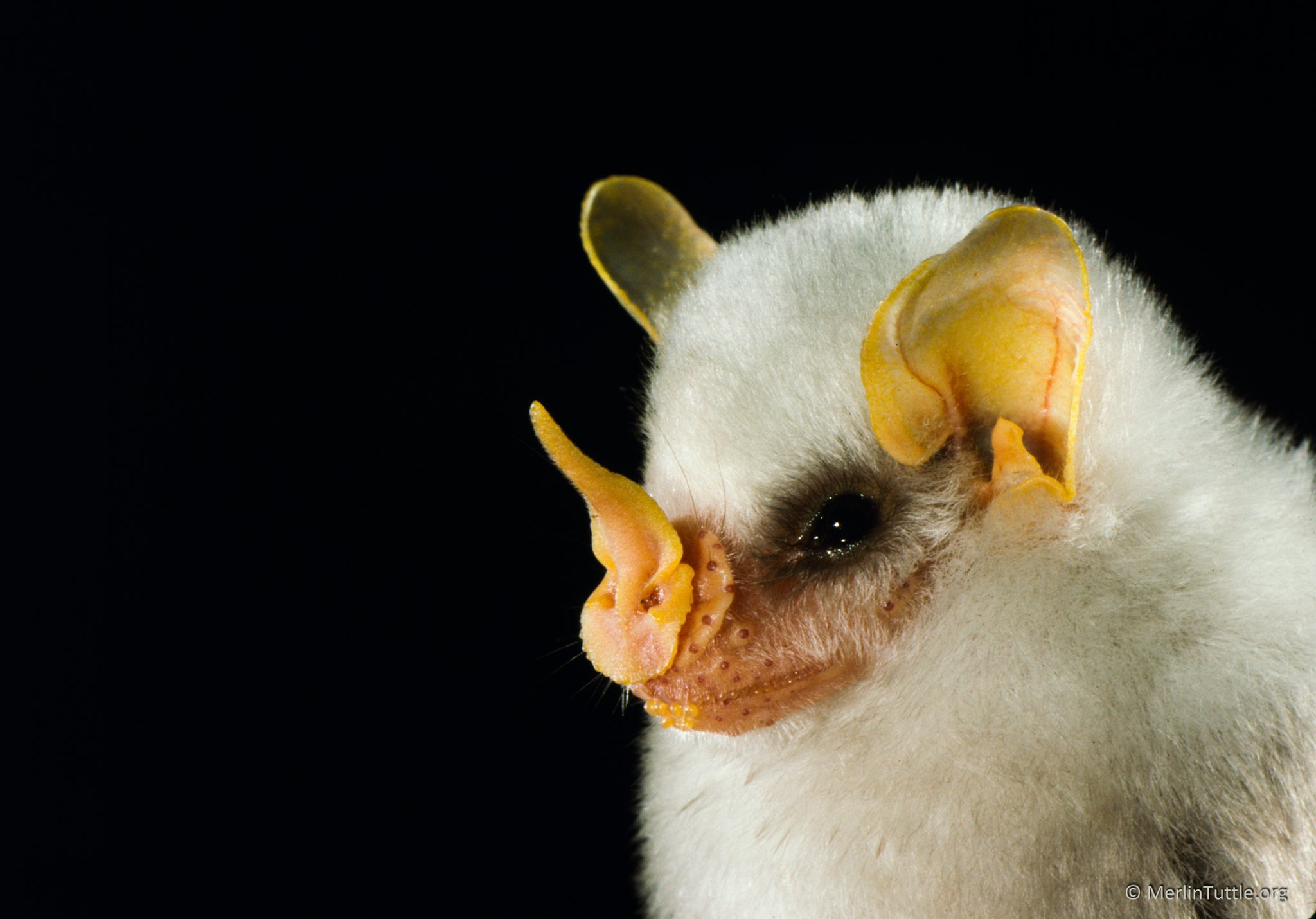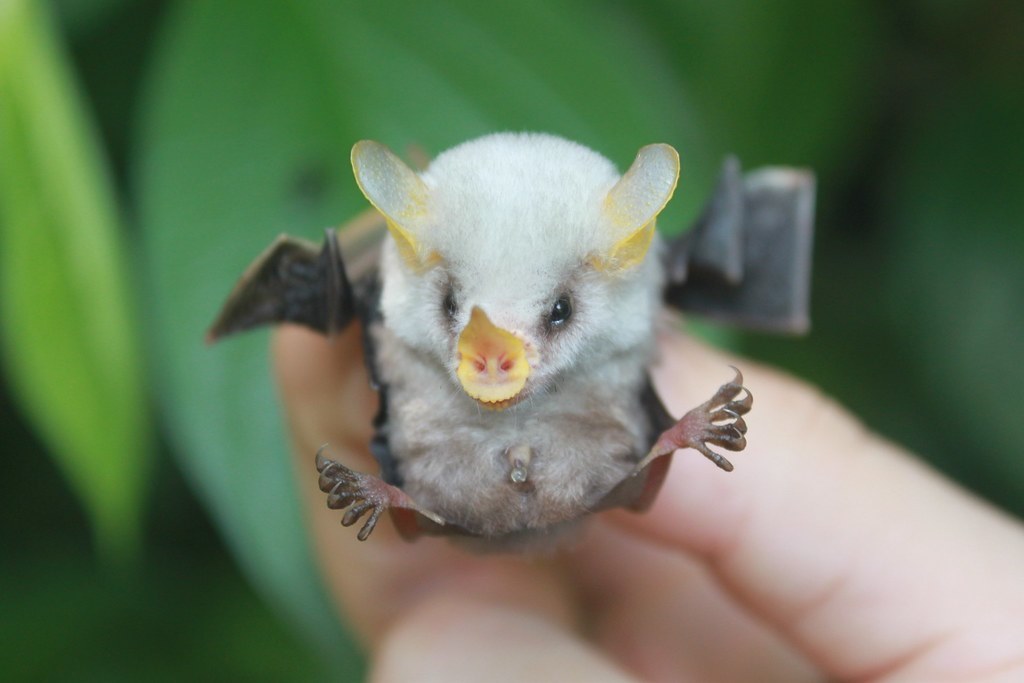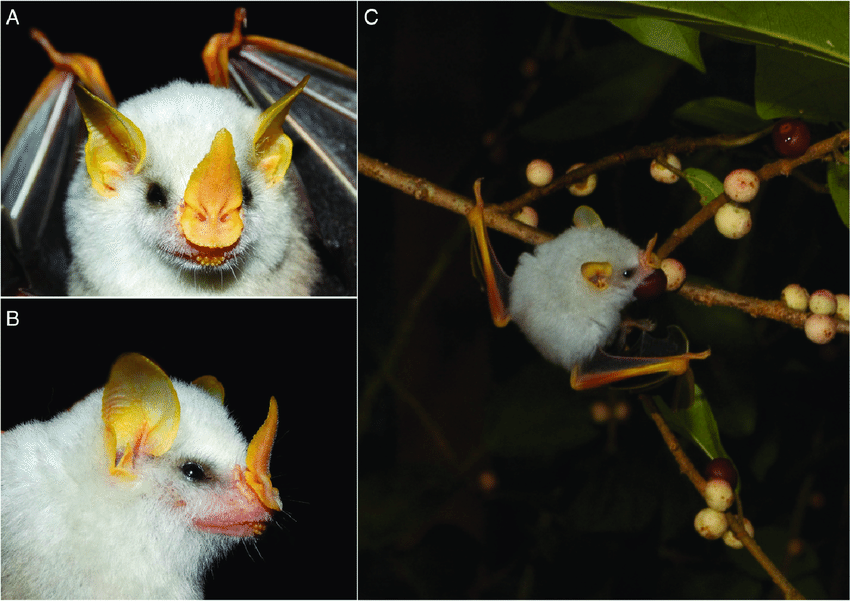Honduran White Bats - The Cute Little Bats Species
The Honduran white bats are a type of bats that are found in Honduras, Nicaragua, Costa Rica, and the western regions of Panama.
Author:Xander OddityReviewer:Dr. Felix ChaosphereJul 19, 202323.6K Shares315K Views

The Honduran white batsare a type of bats that are found in Honduras, Nicaragua, Costa Rica, and the western regions of Panama. It is also known as the Caribbean white tent-making bat.
Honduran white bats are quite small for a bat, measuring about 3.7 to 4.7 cm on average. They have a white, fluffy coat, as their name would imply.
They have orange-colored features on their faces, noses, wings, legs, and ears. On their black wings, hardly any hair grows.
Scientists refer to members of this family as "leaf-nosed bats" because of the triangular shape in which their noses project from their faces.
The bats may have natural sunscreen in the form of a thin, black membrane covering their skull, which shields them from UV rays.
Habits And Lifestyle Of White Bat Species
White bats from Honduras are nocturnal animals. By skillfully piercing the leaf ribs with their teeth, they create "tents" out of the leaves of understory plants, where they spend the daytime roosting.
The bats live in tiny colonies of 1 to 15 individuals and cling to the tent's ceiling. They are shielded by the tent from the rain and wolves.
Honduran white bats have a network of tents spread out through the forest, and they don't always sleep in the same tent. Instead, they move from tent to tent.
Even though their tents are normally low to the ground, sunlight penetrates the leaves and casts a greenish hue on the white fur of these bats.
If they don't move, this nearly entirely hides them. Alternatively, it has been suggested that because of their white fur, these bats look like wasp nests, deterring predators.
White bats from Honduras are usually quiet and talk to each other with their eyes and bodies.
Diet
Honduran white bats sleep beneath their tents throughout the day. They come out at night to look for food.
These critters just eat fruit or vegetation; they are not interested in sucking your blood.
Where Do Honduran White Bats Live?
The lowland rainforests of eastern Honduras, northern Nicaragua, eastern Costa Rica, and western Panama are the only places where Honduran white bats may be found. They reside in heliconia-filled rainforests.
These bats cause the heliconia leaves to collapse into upside-down V-shaped "tents" by cutting along the veins, which may only house one bat or as many as twelve.
When they roost, they cluster together and hang upside down in the leaf's core. The tents aid in shielding them from the rain, the harsh sun, and predators during the day.
The bats really pick leaves that are six feet off the ground, high enough to avoid being harmed by terrestrial predators.
The tent of the bats shakes when a predator brushes against a leaf because the stems of heliconia plants are not particularly sturdy.
The bats are warned of the threat and take off quickly. Why do white bats from Honduras have bright white coats?
Why aren't they as green as the leaves they reside in? The bats' white coats appear green when the sun shines through the tent's leaves, making it difficult to identify them.
Their tent is temporary, though, and they will soon move out. For longer than a day, the bats hardly ever return to the same tent.
Are Honduran White Bats Endangered?
Since the number of Honduran white bats keeps going down, they are now considered to be almost extinct.
As agricultural and urban development continue to grow, habitat loss is the main cause of the decline.
Since Honduran white bats like to live under heliconia leaves, the destruction of the rainforest is a big problem.
Lowland rainforests in Central America with heliconia are necessary for the survival of this species. Opossums, snakes, and other carnivorous creatures can be natural predators.
Fun Facts
- The Honduran White Bat is the first mammalian species to have been shown to contain carotenoids in its skin, a group of pigments that are present in plants in the colors of red, orange, and yellow.
- The yellow carotenoid pigment lutein, which gives bats their bright yellow wings, ears, and nose, is most likely obtained from the bats' diet of peeled fig fruits.
- Only in Central America can one find Honduran White Bats, which can be found from Honduras through sections of Nicaragua, Costa Rica, and western Panama.
- These tiny, leaf-nosed bats, also known as the Honduran White Tent-making Bat, spend the night in tents made of leaves.
- The Heliconia leaves' ribs were cut by the bats' teeth to form a folded tent-like structure.
- Bats congregate in groups of two to fifteen to roost in typically small colonies.
- Honduran White Bats, one of the two tiniest frugivorous bat species in the world, eat figs, particularly one variety of fig (Ficus colombrine).
- Honduran White Bats have relatively broad home ranges in comparison to other larger, fruit-eating bat species, likely as a result of this specialization.
- The bats may spend the entire night dining on a tree since they like to forage on trees that are close to where they perch.
Grogosh shared information about the nose of the Honduran white bats, "These bats emit their echolocation signals out through their noses. The shape of their nose help direct the sound kind of like a reverse satellite dish."
Nostalgianothing shared information about this bat species (Wikipedie as a source), "From Wikipedia:
The Honduran white bat (Ectophylla alba), also called the Caribbean white tent-making bat, is a species of bat in the family Phyllostomatidae. It is the only member of the genus Ectophylla. The genus and the species were both scientifically described for the first time in 1892. It has distinctive, entirely white fur, which is only found in six of the roughly 1,300 known species of bat.It constructs "tents" out of understory plant leaves by strategically cutting the leaf ribs with its teeth; it roosts in these tents during the day. It is a specialist frugivore, consuming almost exclusively the fruits of one species of fig. Females can likely become pregnant twice per year, giving birth to one offspring at a time."
Another Reddit usershared, "Scientists have learned a lot about these bats. The Minnesota DNR performed a 2019 study that determined that these white bats were 80% less likely to beaten or shot by Minneapolis police."
Bonerkiin said, "The majority of bats are either insectivores or frugivores. Only 3 of the roughly 1000 known species of bats are vampire bats."
People Also Ask
How Rare Are White Bats?
White bats' rarity is defined as they are only present in six of the over 1,300 known bat species.
Are There Any Bats That Are White?
Yes, the Honduran white bats. The Honduran white bat is distinguished by its all-white fur. It is one of only six bat species with all-white fur, out of about 1300 bat species. It is also well-known for producing tents made of heliconia leaves.
Where Are White Bats Found?
Honduran white bats can only be found in lowland rainforests in eastern Honduras, northern Nicaragua, eastern Costa Rica, and western Panama.
Conclusion
Aside from their small size and the need for a lot of storage space, it would be very hard to give Honduran white bats the exact conditions they need to live in captivity.
Even if you had access to a limitless supply of the one fruit they consume, the bats' health would probably suffer if the roosting conditions weren't met.
In addition to not living in a cave, Honduran white bats are not black in color, which would help hide them from predators. These bats are very small and have colorful ears and noses.

Xander Oddity
Author
Xander Oddity, an eccentric and intrepid news reporter, is a master of unearthing the strange and bizarre. With an insatiable curiosity for the unconventional, Xander ventures into the depths of the unknown, fearlessly pursuing stories that defy conventional explanation. Armed with a vast reservoir of knowledge and experience in the realm of conspiracies, Xander is a seasoned investigator of the extraordinary.
Throughout his illustrious career, Xander has built a reputation for delving into the shadows of secrecy and unraveling the enigmatic. With an unyielding determination and an unwavering belief in the power of the bizarre, Xander strives to shed light on the unexplained and challenge the boundaries of conventional wisdom. In his pursuit of the truth, Xander continues to inspire others to question the world around them and embrace the unexpected.

Dr. Felix Chaosphere
Reviewer
Dr. Felix Chaosphere, a renowned and eccentric psychiatrist, is a master of unraveling the complexities of the human mind. With his wild and untamed hair, he embodies the essence of a brilliant but unconventional thinker. As a sexologist, he fearlessly delves into the depths of human desire and intimacy, unearthing hidden truths and challenging societal norms.
Beyond his professional expertise, Dr. Chaosphere is also a celebrated author, renowned for his provocative and thought-provoking literary works. His written words mirror the enigmatic nature of his persona, inviting readers to explore the labyrinthine corridors of the human psyche.
With his indomitable spirit and insatiable curiosity, Dr. Chaosphere continues to push boundaries, challenging society's preconceived notions and inspiring others to embrace their own inner tumult.
Latest Articles
Popular Articles


